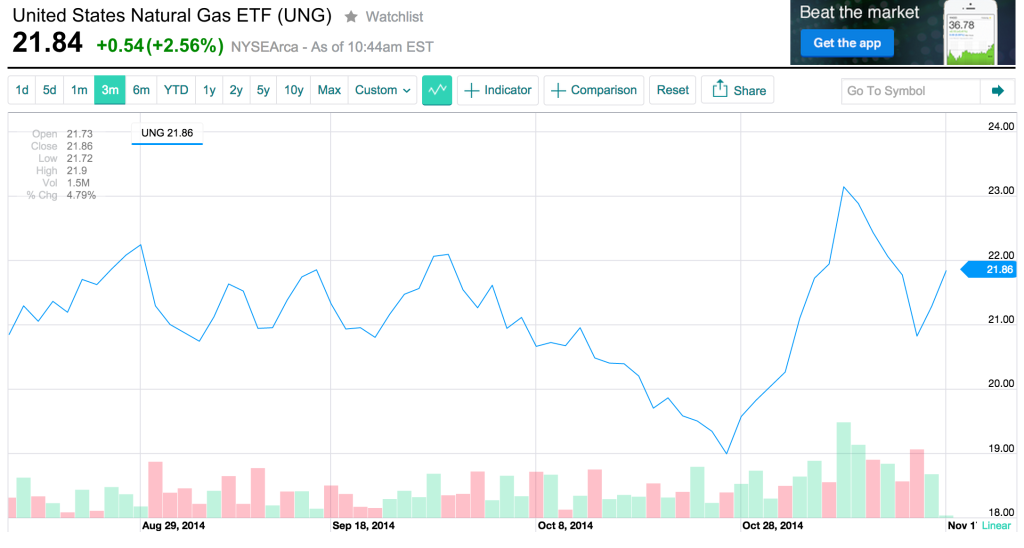Over the years, I’ve been successful trading weather patterns as they relate to commodities such as crude oil, gasoline and grains. As unpredictable as the weather can seem, there are patterns, and traders who get ahead of the crowd can exploit them for reliable profits.
Today, I’m going to share one of my favorite seasonal trades with you, and that is the tendency for natural gas prices to rise in the winter months as the colder weather spurs demand for use in home heating.
Source: U.S. Energy Administration
For seven of the past 10 years, the price of natural gas has risen between the beginning of September and the end February, with an average gain of 17.6%.
The Farmers’ Almanac predicts the 2014-2015 winter will again bring record cold temperatures for most of the nation. And with natural gas prices near historical lows, this would all but guarantee higher prices over the next few months.
Now, you’re probably wondering, if this is the case, why aren’t natural gas prices rising now?
Commodities are different than stocks in that the average person doesn’t go out and buy natural gas, store it in a tank, and then sell it when the price goes up. Commodity prices are largely dependent on real supply and demand, so they are driven less by speculation and more by actual events (like drought, war, changes in government policy, etc.). Big price changes usually occur when data is known rather than before the fact.
Because the weather is currently mild and demand relatively low, most investors aren’t thinking about natural gas at the moment. This gives us an opportune entry point.
Rather than speculate on natural gas in the futures market, we can play this seasonal trend through the United States Natural Gas ETF (NYSE: UNG), which tracks the price of the commodity but trades like a stock.
UNG jumped 2% Monday as natural gas futures rose due to an explosion over the weekend that shut down a pipeline feeding gas from the Gulf of Mexico to the Henry Hub delivery point.
This should be nothing more than a temporary blip, so we will remain focused on playing the seasonal trend.

From a technical perspective, there is a fair amount of resistance at $22.70, which is where we’ll place our upside target. This is about 6% above recent prices. However, using a call optionstrategy, we have a chance to leverage this move into 20% profits.
I expect my conservative target to be hit in the next month or two as the cooler weather sets in and the natural gas trade starts to pick up, but we’ll give ourselves some extra time by using options with a January expiration.
UNG Call Option Trade
Today, I am interested in buying UNG Jan 17 Calls for a limit price of $4.75.

Risk graph courtesy of tradeMONSTER.
This call option has a delta of 90, which means it will move roughly $0.90 for every dollar that UNG moves, but it costs only a fraction of the price of the stock.
The trade breaks even on expiration at $21.75 ($17 strike price plus $4.75 options premium), which is 1.6% above current prices.
If UNG hits my $22.70 target, the call option will be worth at least $5.70. When you enter the trade, place a good ’til cancelled (GTC) order to sell the call at this price.
Recommended Trade Setup:
— Buy UNG Jan 17 Calls at $4.75 or less (use limit orders)
— Set stop-loss at $2
— Set price target at $5.70 for a potential 20% gain in four months
If you have a question or comment about today’s strategy, please send it toeditors@profitabletrading.com.
Link to original link HERE:http://www.profitabletrading.com/options/call-put-buys/united-states-natural-gas-etf-ung-call-option-strategy








